by Julie H. Ferguson
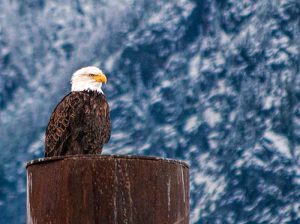 Every November, between two and six thousand eagles congregate to gorge on spawned-out salmon within an easy day trip from Vancouver. I have yearned to experience this, the biggest convocation in North America, but was determined to see it on an unspoiled river.
Every November, between two and six thousand eagles congregate to gorge on spawned-out salmon within an easy day trip from Vancouver. I have yearned to experience this, the biggest convocation in North America, but was determined to see it on an unspoiled river.
The Harrison River, deep in the Fraser Valley, filled the bill and is less than two hours from home.
From time immemorial, huge numbers of eagles have followed Pacific salmon flooding up wild BC rivers to spawn, then die. Dwindling food supplies and freeze-up further north drive the hungry eagles to southern BC for the later salmon runs. They are lazy birds – scavengers first, hunters only when they must.
The eagles are everywhere: on the gravel bars, along the river’s bank, and atop pilings. They fill the bare trees, soar in the sky, and bicker over a single salmon even when there are thousands. I hear them mew, whistle, cluck, and shriek. I struggle with my camera bundled up in a shower cap and the dim light so close to the winter solstice.
At the confluence of the Harrison and Chehalis Rivers, named the first Salmon Stronghold in Canada, the annual Fraser Valley Bald Eagle Festival kicks off the spectacle in mid-November. Opening day at Pretty Estate resort, home of Rowena’s Inn and Sandpiper Golf Course, sees experts, eagle handlers, and photographers on hand to assist visitors in understanding the birds’ life cycle that is directly tied to salmon migrations. BC’s well-known eagle guru David Hancock of the Hancock Wildlife Foundation is a regular and approachable presence.
There are two ways to experience this natural phenomenon. Drive out to Harrison Mills along Highway 7 on the north side of the Fraser River:
1. On land: Turn left at the Sasquatch Inn and follow the signs to Sandpiper Golf Course (1km). Turn right through the gates of the Pretty Estate Resort. You will be directed to parking behind Rowena’s Inn and take a short walk to the “Flats.” You can’t miss the eagles! (Free)
2. On water: Drive a bit further on Hwy 7 and cross the Harrison River bridge, then turn right to Kilby and follow the signs. From here you can take a guided river cruise operated by Fraser River Safari. The birds are not spooked by the boat, so you get closer and keep drier than on foot. It’s wise to book the river safari online before leaving Vancouver. ($65-70/person)
The boat navigates through Harrison Bay and up-river. From the pilings, the adult eagles stare me down with the unwavering eyes of all raptors. Their yellow beaks, hooked and sharp, are perfect for eating flesh. I watch an adult haul a salmon carcass from between the logs and fend off thieving juveniles and gulls.
In late December, the eagles disperse—even partners go their separate ways.
“But I thought they mated for life,” I comment.
“Last year one tagged male flew to Haida Gwaii and his partner went to Montana,” my guide says. “They returned to their nest here on exactly the same March day to raise another eaglet.”
I will return too.
© Julie H. Ferguson 2013
The author wishes to thank Pretty Estate Resort and Fraser River Safari for making this adventure possible.
If you go:
The bald eagles visit Harrison River from mid-November to late-December; the festival is held annually on the third weekend in November at the Pretty Estate Resort. (Nov 16-17 in 2013)
Pack hiking boots, rain-gear and warm clothing, a hat and gloves. Take binoculars and, if you want good photos of the eagles, a camera with a 200mm lens or longer (smartphone cameras will disappoint).
The Fraser Valley Bald Eagle Festival is accessible to visitors who can walk on uneven ground. Rowena’s Inn is wheelchair accessible, but the river safari is not. Both are kid-friendly. Visitors can find good meals at both Pretty Estate and at Kilby Historic Site.
- Fraser Valley Bald Eagle Festival: http://fraservalleybaldeaglefestival.ca/
- Fraser River Safari: http://fraserriversafari.com/
- Harrison River, Canada’s first Salmon Stronghold: www.wildsalmoncenter.org/programs/north_america/canada.php
- Hancock Wildlife Foundation: www.hancockwildlife.org/
– Bald Eagle biology at www.hancockwildlife.org/index.php?topic=BaldEagleBiology
– Hancock’s eaglecam at Rowena’s broadcasts two live views at
http://www.hancockwildlife.org/index.php?topic=HarrMills#camera-north.
- Pretty Estate Resort:
Rowena’s Inn on the River – www.sandpipergolfclub.com/rowenas_home/
River’s Edge Restaurant – http://www.sandpipergolfclub.com/riversedge_home/
Sandpiper Golf– www.sandpipergolfclub.com/
- Tourism Harrison for accommodation, etc. – www.tourismharrison.com
© Photos by Pharos (Julie H. Ferguson) 2013
About the author:
Julie H. Ferguson is an addicted travel writer and photographer who is intensely interested in the history and culture of foreign lands, as well as Canada, and her stories and images reflect this focus. She never leaves home without her cameras and voice recorder, always looking for the colour and sounds that captivate readers everywhere.
Julie is also the author of twenty-six books, including four about Canadian history and seventeen travel-photo portfolios. Her travel articles and images have appeared in global markets, both print and online.
She invites you to visit her travelog www.stampsinmypassport.blogspot.com, her website at www.beaconlit.com, and her portfolio at www.flickr.com/photos/beaconlit.

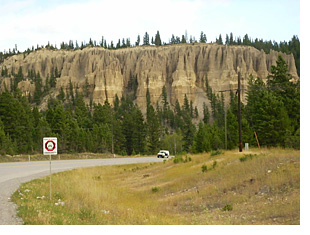 Above the resort, on a hill built from the ancient deposits of the springs, there sits a restored historic bath house with three rooms, each of which sports a bathtub size pool of spring waters. Behind the bath house the wandering hot springs support two man made outdoor hot pools where the weary can park themselves and soak their feet.
Above the resort, on a hill built from the ancient deposits of the springs, there sits a restored historic bath house with three rooms, each of which sports a bathtub size pool of spring waters. Behind the bath house the wandering hot springs support two man made outdoor hot pools where the weary can park themselves and soak their feet.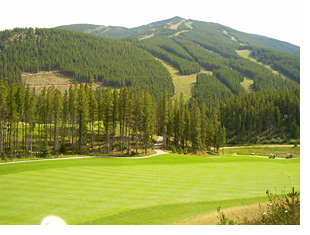 Nor is this land but a seasonal destination. With winter comes skiing on a range of slopes from Golden to Cranbrook as well as heli-skiing, cross country skiing, snowmobiling and snow shoeing.
Nor is this land but a seasonal destination. With winter comes skiing on a range of slopes from Golden to Cranbrook as well as heli-skiing, cross country skiing, snowmobiling and snow shoeing.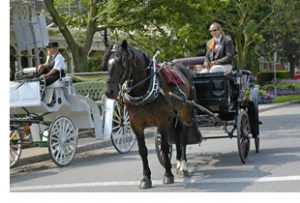
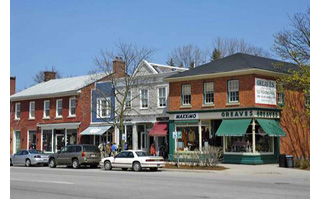 At the north end of the Parkway, where the river runs into Lake Ontario, you come to Niagara-on-the-Lake, a bustling resort town famous for its theater festival — the Shaw Festival — which celebrates the works of Irish playwright George Bernard Shaw. The town also boasts winery tours, heritage homes, a historic fort and a flower-filled main street.
At the north end of the Parkway, where the river runs into Lake Ontario, you come to Niagara-on-the-Lake, a bustling resort town famous for its theater festival — the Shaw Festival — which celebrates the works of Irish playwright George Bernard Shaw. The town also boasts winery tours, heritage homes, a historic fort and a flower-filled main street.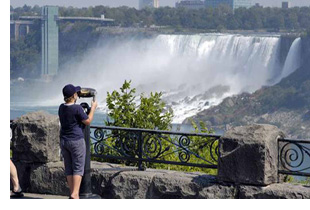 Down at the lakeshore park, you’ll find a Victorian-style gazebo facing the water. This gingerbread confection blends perfectly with the rest of the town, but — surprise! — it’s much younger than everything else. It was built for the movie The Dead Zone, an adaptation of the Stephen King novel starring Christopher Walken, when it was shot here in 1983.
Down at the lakeshore park, you’ll find a Victorian-style gazebo facing the water. This gingerbread confection blends perfectly with the rest of the town, but — surprise! — it’s much younger than everything else. It was built for the movie The Dead Zone, an adaptation of the Stephen King novel starring Christopher Walken, when it was shot here in 1983.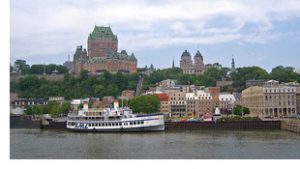
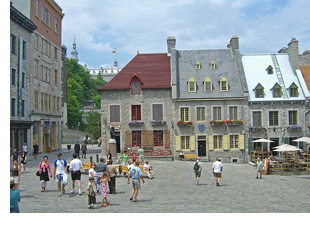 Donning high tech earphones, the voices of New France’s founders recap their accomplishments; authentic artifacts provide compelling visuals of each era.
Donning high tech earphones, the voices of New France’s founders recap their accomplishments; authentic artifacts provide compelling visuals of each era.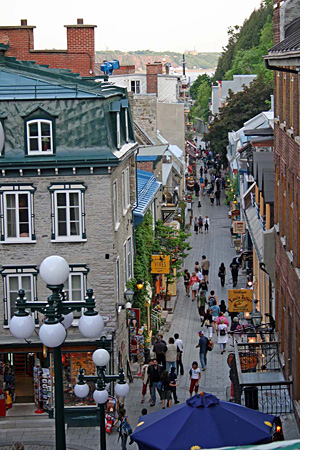 Rue Petit Champlain still flourishes with flower baskets, artisan studios, specialty boutiques and sidewalk cafés, where many linger over croissants and café au lait and we come across another intriguing mural, this time illustrating the activities of early Irish shipbuilders and their families.
Rue Petit Champlain still flourishes with flower baskets, artisan studios, specialty boutiques and sidewalk cafés, where many linger over croissants and café au lait and we come across another intriguing mural, this time illustrating the activities of early Irish shipbuilders and their families.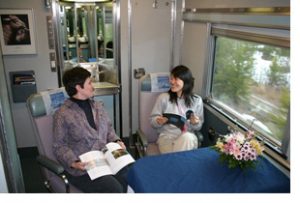
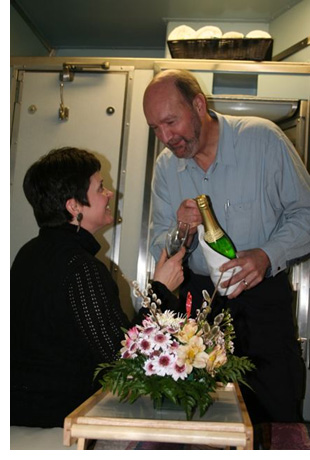 “They paid for their tickets minutes before boarding, in cash, but were suspiciously young to be carrying so much money around,” he recalls. “They checked in two large hockey bags that were disproportionately heavy, and they had no hockey sticks.
“They paid for their tickets minutes before boarding, in cash, but were suspiciously young to be carrying so much money around,” he recalls. “They checked in two large hockey bags that were disproportionately heavy, and they had no hockey sticks.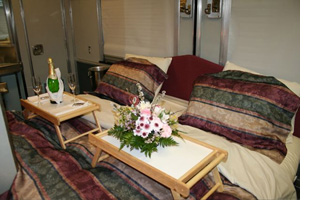 The first class experience on VIA is called Romance By Rail, where two roomettes are joined together to permit a queen-size bed to dominate the space. By day the beds are folded away to accommodate four padded chairs and a small table. The suite comes with fresh flowers, his and hers washrooms, snowy white towels and a bottle of welcoming champagne.
The first class experience on VIA is called Romance By Rail, where two roomettes are joined together to permit a queen-size bed to dominate the space. By day the beds are folded away to accommodate four padded chairs and a small table. The suite comes with fresh flowers, his and hers washrooms, snowy white towels and a bottle of welcoming champagne.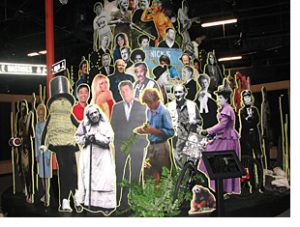
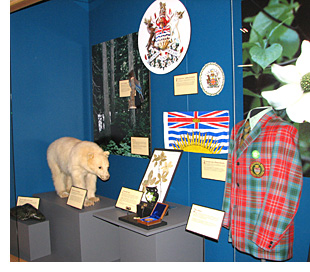 The glass showcases circling The Party, reveal some surprising facts. How many of us can recognize our B.C. tartan, or have actually worn the rather hit-me-in-the-eye jacket on display? You’ll never guess who sported this back in the early ‘70s. And do you know that the rare white Kermode bear is our provincial mammal?
The glass showcases circling The Party, reveal some surprising facts. How many of us can recognize our B.C. tartan, or have actually worn the rather hit-me-in-the-eye jacket on display? You’ll never guess who sported this back in the early ‘70s. And do you know that the rare white Kermode bear is our provincial mammal?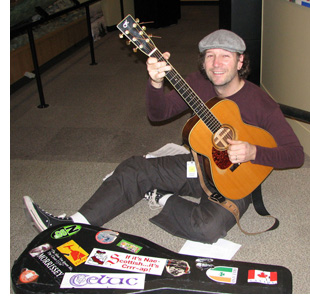 I meet up with a roving musician singing ballads about fame, fortune, love and loss and spend a while listening to actors on stage recounting tales of courage and misadventure: stories about people like you and me.
I meet up with a roving musician singing ballads about fame, fortune, love and loss and spend a while listening to actors on stage recounting tales of courage and misadventure: stories about people like you and me.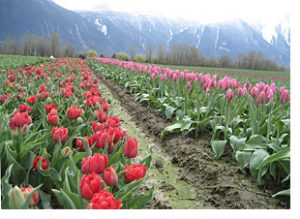
 Mother Nature determines when flowers are going to flourish, and during this unusually chilly spring, the tulips have had a tough time raising their pretty heads. Kate Onos-Gilbert would know. As owner of Tulips of the Valley Festival she definitely understands how her garden grows.
Mother Nature determines when flowers are going to flourish, and during this unusually chilly spring, the tulips have had a tough time raising their pretty heads. Kate Onos-Gilbert would know. As owner of Tulips of the Valley Festival she definitely understands how her garden grows.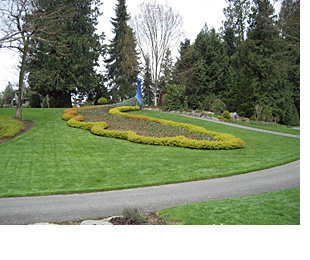 When Brian and Faye Minter purchased their property at the base of Mt Cheam, they had a vision. If they built a world class garden on this site, they hoped people would come. And they did. Ever since May, 1980, when Minter Gardens came to life, so did their dream.
When Brian and Faye Minter purchased their property at the base of Mt Cheam, they had a vision. If they built a world class garden on this site, they hoped people would come. And they did. Ever since May, 1980, when Minter Gardens came to life, so did their dream.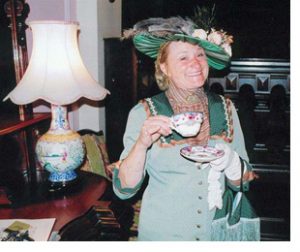
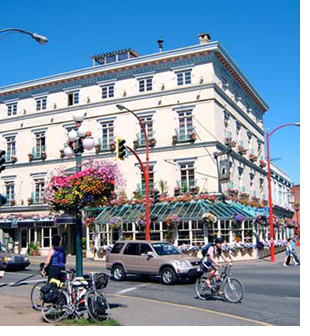 Docking below North America’s oldest Chinatown, we stroll to Swans Brewpub for lunch. Surrounded by oak, brick and extraordinary artwork, we sip traditional British-style ales. Buckerfield’s once sold animal-feeds and grain here; today the on-site brewery ferments grains into eight hearty beers.
Docking below North America’s oldest Chinatown, we stroll to Swans Brewpub for lunch. Surrounded by oak, brick and extraordinary artwork, we sip traditional British-style ales. Buckerfield’s once sold animal-feeds and grain here; today the on-site brewery ferments grains into eight hearty beers.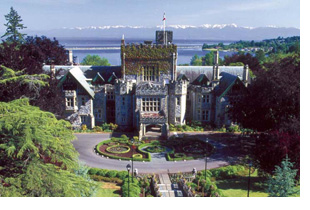 On our last day, the Galloping Goose trail leads us up to James Dunsmuir’s astounding castle on Hatley Park Estate. Like his coal-baron father, he built an Edwardian castle outside downtown Victoria, declaring, “Money doesn’t matter, just build me what I want.”
On our last day, the Galloping Goose trail leads us up to James Dunsmuir’s astounding castle on Hatley Park Estate. Like his coal-baron father, he built an Edwardian castle outside downtown Victoria, declaring, “Money doesn’t matter, just build me what I want.”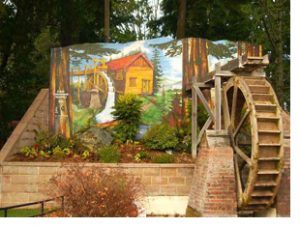
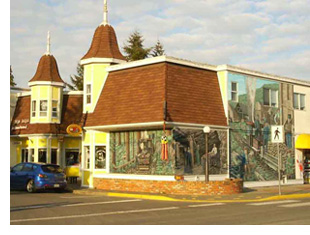 The Visitor Information Centre, close by the parking lot, affords all sorts of information, including an official mural map for a dollar. This self-guided walking tour of the famed murals is aided by the painted yellow feet you can follow around town.
The Visitor Information Centre, close by the parking lot, affords all sorts of information, including an official mural map for a dollar. This self-guided walking tour of the famed murals is aided by the painted yellow feet you can follow around town.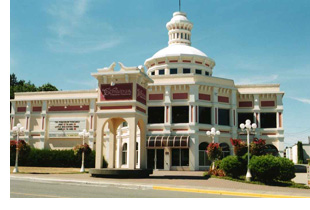 Either way you can keep your day alive lazing back afterwards at the Dancing Bean Café, where musical entertainment adds to the ambience on Fridays and Saturdays, or at the Twisted Sisters Tea House on Maple Street, where you can enjoy whatever is playing on their big screen and an assortment of over sixty teas.
Either way you can keep your day alive lazing back afterwards at the Dancing Bean Café, where musical entertainment adds to the ambience on Fridays and Saturdays, or at the Twisted Sisters Tea House on Maple Street, where you can enjoy whatever is playing on their big screen and an assortment of over sixty teas.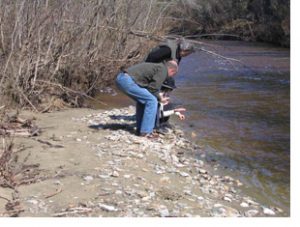
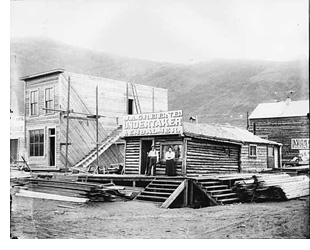 Then in 1899, it stopped. The Gold Rush was over, the miners moved on. Dawson City reverted into a sub-Arctic community with a difference – a ghostly aura of the dancing girls and fast living hovers over the town.
Then in 1899, it stopped. The Gold Rush was over, the miners moved on. Dawson City reverted into a sub-Arctic community with a difference – a ghostly aura of the dancing girls and fast living hovers over the town. But these were two determined women who met about fifteen years ago. “I was passing through at the time,” said Kim, “and Wendy was a dancer at Diamond Tooth Gerties Gambling Hall.” As they got the feel of the historic town with its wooden sidewalks, dirt roads and historic buildings, the lure of the Yukon seduced them and they determined to stay.
But these were two determined women who met about fifteen years ago. “I was passing through at the time,” said Kim, “and Wendy was a dancer at Diamond Tooth Gerties Gambling Hall.” As they got the feel of the historic town with its wooden sidewalks, dirt roads and historic buildings, the lure of the Yukon seduced them and they determined to stay.